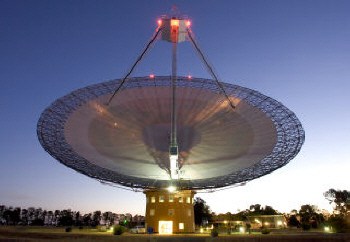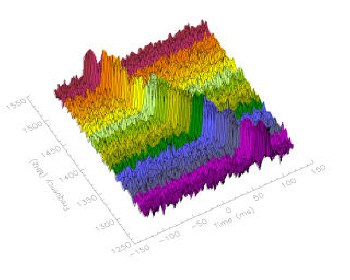Astronomers have found a new type of neutron star. The objects send out short bursts of radio waves lasting just two to 30 milliseconds followed by "dark spells" lasting minutes to hours. Conventional plusars, in contrast, emit flashes of radio waves at regular intervals. The new objects -- dubbed "rotating radio transients" or RRATs -- were discovered by a team led by Maura McLaughlin from the Jodrell Bank Observatory at the University of Manchester in the UK. She believes that the RRATs may outnumber conventional radio pulsars by a ratio of four to one (Nature 439 817).

Pulsars are rapidly spinning neutron stars that are created when a giant star explodes at the end of its life. During this supernova explosion, the outer layer of the star is ejected into space and the inner core collapses into a super-dense, rotating neutron star. Intense magnetic and electric fields make the neutron star emit beams of radiation that sweep across space at regular intervals — often hundreds of times a second — as the star rotates. Magnetars form another class of spinning neutron star, giving off powerful X-ray and gamma-ray bursts.
The new type of neutron star was discovered by McLaughlin’s team using the Parkes radio telescope in Australia while they were looking for normal radio pulsars in the Galactic plane. “The RRATs were discovered in a reanalysis of the Parkes Multibeam Pulsar Survey data that was designed to detect short bursts of radio emission,” explains McLaughlin. “This is different to normal pulsar searches, which look for constant periodic emission.”
The team found 11 RRATs, ten of which have periods of between 0.4 and 7 seconds. The objects send out isolated radio flashes lasting just milliseconds and can then remain “invisible” for up to three hours. According to McLaughlin and co-workers, RRATs probably outnumber conventional radio pulsars by about four times. They are just very difficult to detect because they can only be seen for about 0.1 seconds per day and because the bursts look very similar to man-made radio frequency interference. McLaughlin adds that RRATS could also help to account for the relative proportion of neutrons stars that are radio-quiet, such as magnetars and X-ray dim isolated neutron stars.
The astronomers will now continue to time and monitor the RRATs with larger, more sensitive telescopes, such as the Green Bank and Arecibo telescopes, while also searching for more RRATs. “We are also planning further studies to better estimate the population of these objects and whether their existence challenges current supernova rate estimates,” adds McLaughlin.




